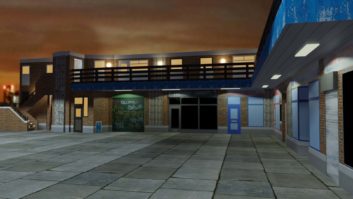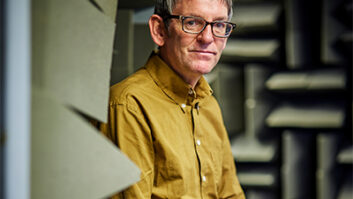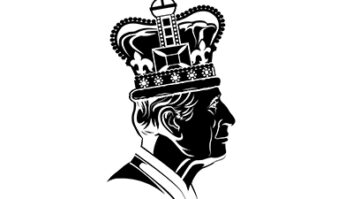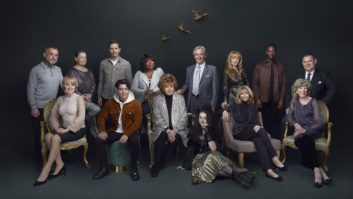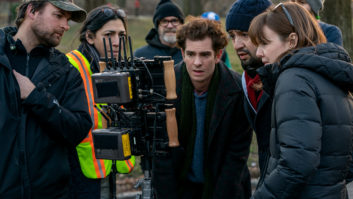Like so many other programmes, ITV’s Coronation Street paused production nearly three months ago as the effects of Covid-19 became apparent and restrictions were put in place. However, with many episodes already completed, and by reducing the transmission pattern from six to three per week, there has not been a break in transmission for the ever-popular soap.
“Our last day of filming was Friday 20th March,” says Lee Rayner, the programme’s senior production manager. “But once risk assessment and other considerations were taken into account, site inductions for construction and design were started on 20th May to get the studios ready for production to restart. On 1st June, further site inductions for the shooting crew began, including additional Health and Safety training for our cohort managers. Once all that was completed, principle photography recommenced on Monday 8th June.”
So, are there any plans to include the effects of the coronavirus in the upcoming episodes?
“We will reflect social distancing on screen, but currently do not intend to have a Covid-19 storyline. As filming is closer to TX than usual, it gives us the ability to be more agile and better reflect any changes to restrictions, though not accurate to the week.”
That approach means there are no plans for topical ‘drop-ins’ that might reflect the situation regarding the virus at time of transmission. “They don’t really fit with Coronation Street’s ‘grammar’,” says Rayner. “Our editorial focus remains driven by our pre-planned storylines. ‘Drop-Ins’ are not something we have done in the past, other than in our live episodes.”
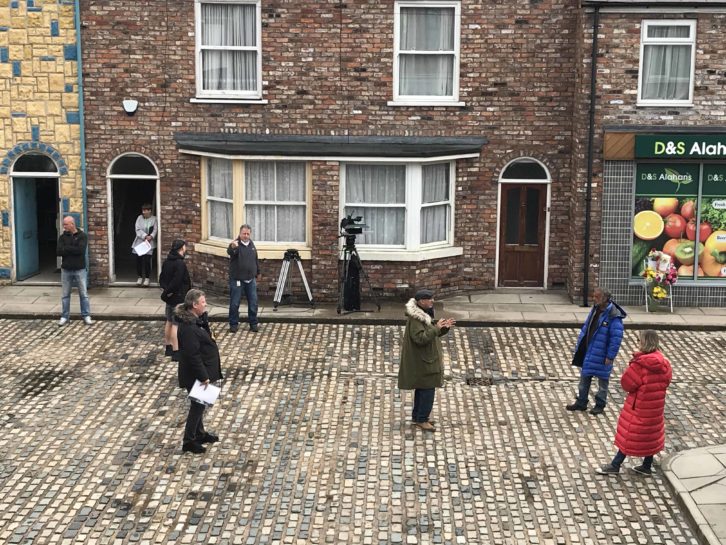
Progressing production
Once shooting restarted, the first task was to complete the two production blocks that were in progress prior to lockdown. “We have given ourselves more time to shoot the scenes until the new way of working becomes established. Although we will be completing the same page count that we achieved prior to lockdown, the editorial team has helped by reducing the scene count in an episode, fewer cast appearing in those scenes, simpler staging and more performance-based scripts.”
Other changes include removing action props where possible, and where that is not achievable, the mantra is ‘tape stops for prop swaps’. That means the recording is paused so that a prop that is used by one actor can be substituted for a clean and sanitised ‘double’ when someone else has to handle it. In addition, the consuming of all food or drink in vision has been cut. All of which will compensate for the additional time required to work safely and maintain the two metres social distancing rule.
However, Rayner states that if it all goes to plan, then the teams will be back to making the same number of episodes prior to lockdown in just a few weeks.
“Our studios are actually quite big, which helps the teams spread out safely and everyone can watch programme picture via the Teradek system on their iPads, so no one has to gather around monitors in ‘Video Village’.”
Camera considerations
Rayner goes on to explain that camera moves have not been limited in the new scripts. “However, the number of cameras has been reduced from three to two and we have introduced some restrictions to their positions.”
For example, no cameras are allowed into the artists’ action area of the set. That area is taped off and becomes the designated safe space for the cast. Each camera has a 22mm zoom, meaning close ups are possible from the other side of the studio. There are no plans for remote cameras to be used. “The artists need to concentrate on their performance, rather than on hitting their marks, so our camera operators will continue to adjust the camera positions accordingly on every shot,” reports Rayner.
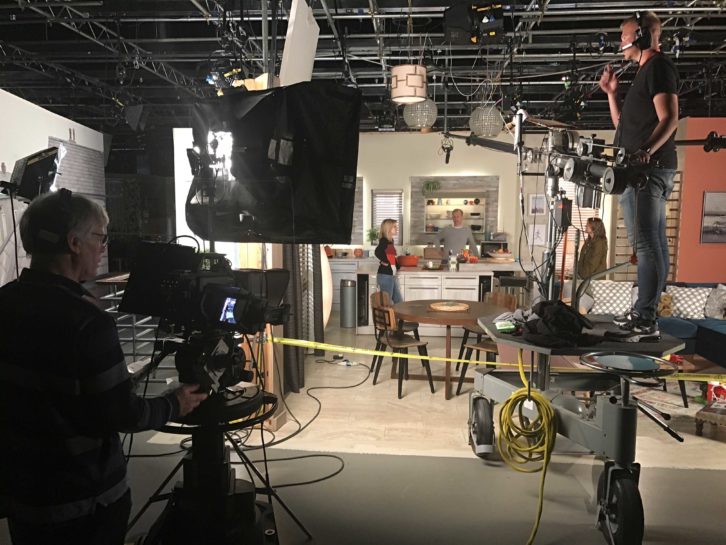
Directors will work on the floor from their own monitor. If they want to be closer to the set, they can use a dedicated iPad with a quad-split showing programme picture.
“As we are working with two cameras instead of the usual three, we do not need to camera script the episodes and therefore do not currently require a vision mixer to produce a guide cut version of the action. However, we have installed a plexiglass screen in the director’s gallery, so we can re-introduce the vision mixer safely at any time whilst adhering to social distancing.”
Currently, the script supervisor is the only person working in the director’s galley. The sound control room is home to the recordist, while the lighting gallery accommodates the lighting director and the racks engineer, separated by a plexiglass screen.
Editing on site
“Our current plan is for editing to be carried out at our studios in Trafford, although we do have edit suites set up in some homes, should that be required. Our editors can work much quicker in the edit suite than they can from a home rig,” says Rayner.
That means directors fine cut with their editors in Trafford. They sit in two different edit suites that have the same pictures configured on all the monitors with open talkback so they can speak to each other. Viewings are carried out by the producer, Iain MacLeod, in much the same way, with him watching from a third suite, again with open talkback. This makes any required changes that much quicker – something that is especially important now that the turnaround from edit to transmission is very tight in the first few months.
“We dub and colour at our studio, too, as the rooms are single occupancy and it is the quickest way of completing episodes. All media is recorded straight to one of our four AirSpeed recorders, so no ingestion process is required and our media management team can work remotely from home,” explains Rayner.
He concludes, “All the feedback we have received so far concerning our risk mitigation procedures has been really positive, and everybody has commented on how safe they feel coming back to work. Apart from us reflecting social distancing on screen – as is happening in the ‘real world’, there should be no noticeable change to the look and feel of the show that everybody knows and loves.”
